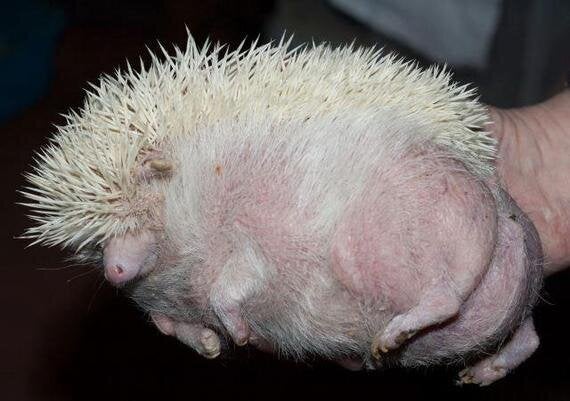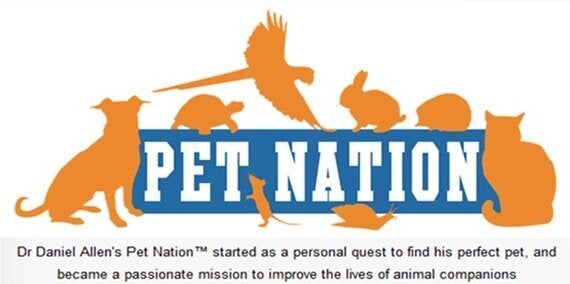'Pet crazes': a purchasing fad initiated by popular on screen representations, and reinforced by badly researched photo-led tabloid journalism. Photogenic animals are labelled as the next "must-have" pet, trend-setting breeders are afforded free national publicity, and an unsuspecting public can make the "craze" a reality.
This self-fulfilling prophecy has happened with a number of species across the world. In the 1990s the rise in terrapins can be linked to Teenage Mutant Ninja Turtles, the market for hybridized African Pygmy Hedgehogs to Sonic the Hedgehog. The 1995 movie Babe ensured there would be a market for 'micro pigs', and more recently clownfish rode the wave of popularity due to Finding Nemo (2003).
On occasions the tabloids revisit the outcome of such crazes. Abandoned terrapins that became invasive species are shown basking in the British sun, and denounced for feasting on native wildlife; examples of 'micro pigs' who grew out of their name to become unexpected 20-stone house guests; and, stories of children flushing clownfish down the toilet, so they will find their way back to the ocean, just like Nemo.

Copyright: Precious Babies / Pet Nation
African Pygmy Hedgehogs (APHs) are the creation of the North American pet trade - the offspring of intentionally bred four-toed hedgehogs (Atelerix albiventris) and Algerian hedgehogs (Atelerix algirus). Available in the US since the 1990s, the novelty has yet to wear off. According to the Hedgehog Welfare Society, demand for this domesticated species has grown with owners posting "cute" photos on social media. There is now an estimated North American population of between 100,000 and 140,000.
Their popularity in the UK is also on the rise. After an initial five-year fad, the prickly 'pet craze' started in 2009, when these "adorable" alternatives to small furry pets hit the tabloids.
'Eggstraordinary pygmy hedgehog sits in an eggcup' and 'Hard-boiled hog' were just a few of the light-hearted headlines. Five years later, there are thought to be over 10,000 houseguests. This is important. Unlike the wild European hedgehog (Erinaceus europaeus), APHs can only live indoors and would perish in the wild. It is illegal to keep the larger European hedgehogs as pets in the UK.
The problem with these animals is misinformation. Alongside the "cute" factor, some breeders style APHs as "low maintenance", "odour free" and "affectionate". Some go as far to say they are the "perfect pet for children". Having met many APHs, it is safe to say this is simply is not the case.
Their bodies may be odour free, but their faeces is absolutely pungent. It really is a gag-inducing stench! This, of course, has a tendency of going on their feet and being smeared all around their enclosure. For a fresh smelling house, regular cleaning is therefore required. APHs can be affectionate, but they must be regularly handled from a young age, otherwise they will be a prickly huffing ball of fear. They are, of course, nocturnal. You therefore must find time to interact with them at night, which is not ideal for children. None of this is synonymous with low maintenance.
Animal welfare always seems to be forgotten in these crazes. In the US, some link the prevalence of Wobbly Hedgehog Syndrome (a degenerative neurological disease in domesticated hedgehogs) and propensity for cancers to inbreeding. Life expectancy has also decreased, with average ages of eight or nine years in the 1980s down to four or five today.
When the expectations of new owners do not meet the realities of exotic pet ownership, individual animals suffer. Costing up to £200 per hedgehog, it seems that few are freely relinquished to rescues, even if their care requirements are not being met. Since being founded as a pre-emptive measure in 2009, the National Exotic Hedgehog Rescue has helped 151 UK pet hogs.
My survey of rescued pet hedgehogs going through local wildlife rescues produced these results: Northampton - 30, Orsett - 13, Newbury/Thatcham - five, Birmingham - four, Wallasey - four, Blackpool - three, Colchester - three, Yateley - three, Bromsgrove - two, Malvern - two, Harlow - one, Porchester - one, Leatherhead - one, Watford - one.
Although the preliminary figures may not seem significant, they are indicative of a bigger concern. A number of these rescue APHs were found in gardens, an inhospitable environment. The more troubling situation is the condition which these animals arrive in at wildlife rescues.
Piglet the APH is an extreme example - rescued and rehabilitated by Gill Lucraft of Hedgehog Bottom. Piglet was bought by a teenager who later went to university, then left him with her parents. Knowing little about the species, he was fed on kitten biscuits, and cramped in a small vivarium. Fortunately he had a wheel for exercise, but the noisy nocturnal wanderings upset the dog. The wheel was removed and weight gain started. Once his spines started to fall out due to a combination of ringworm and a staph infection, they decided they could not cope and called a wild hedgehog rescue.

Copyright: Hedgehog Bottom
One shudders to think how many APH have been released into the wild and died without being found, or worst still remain with owners oblivious to their specialist care requirements. If you are thinking of buying into the APH 'pet craze', take a good look at this bald, infected, fat, waddling hedgehog before making any fad purchases. This is the not-so-cute reality of irresponsible pet ownership the tabloids, breeders and pet shops prefer you not to see.
(For more candid pet-related observations and experiences, visit Dr Daniel Allen's Pet Nation)

